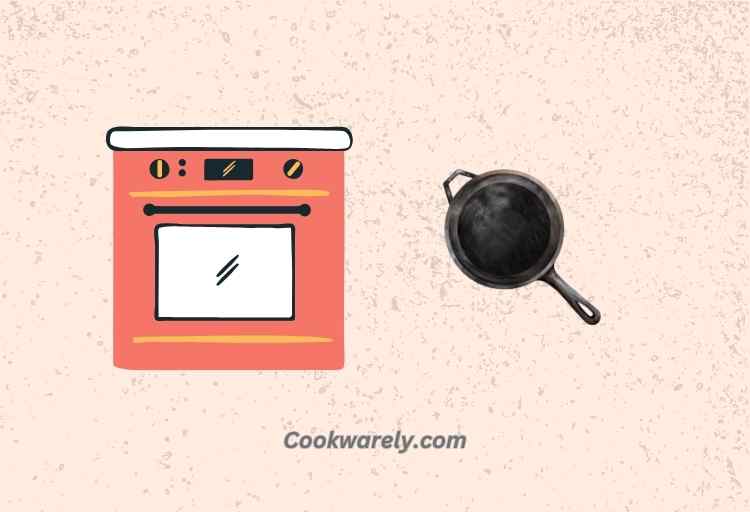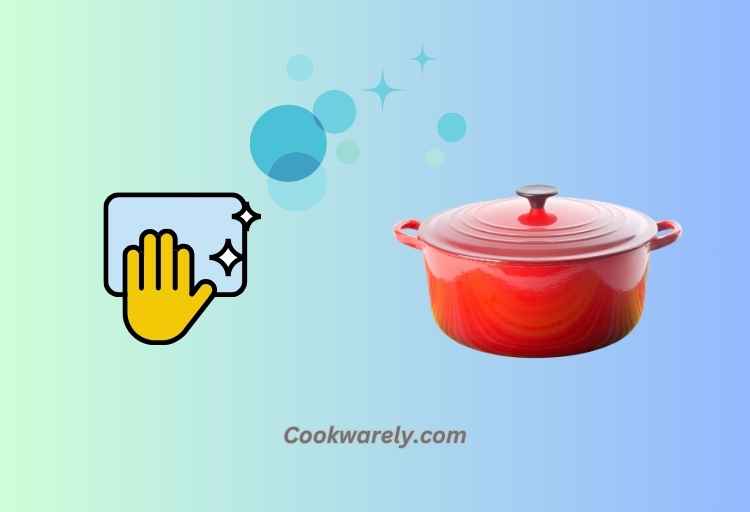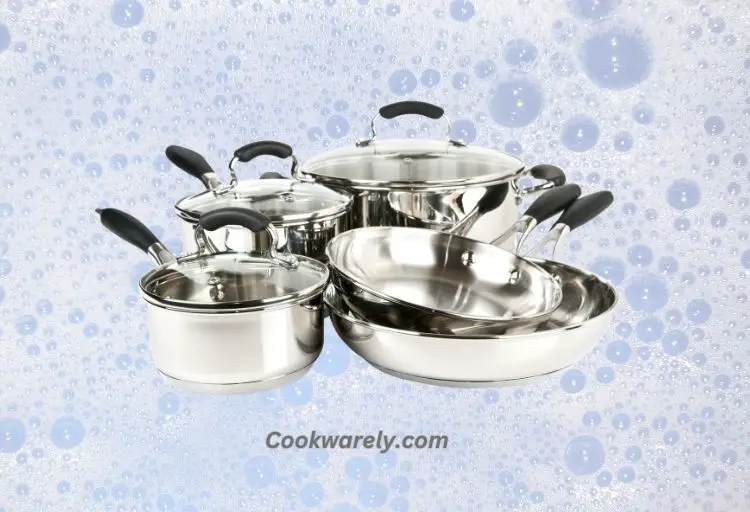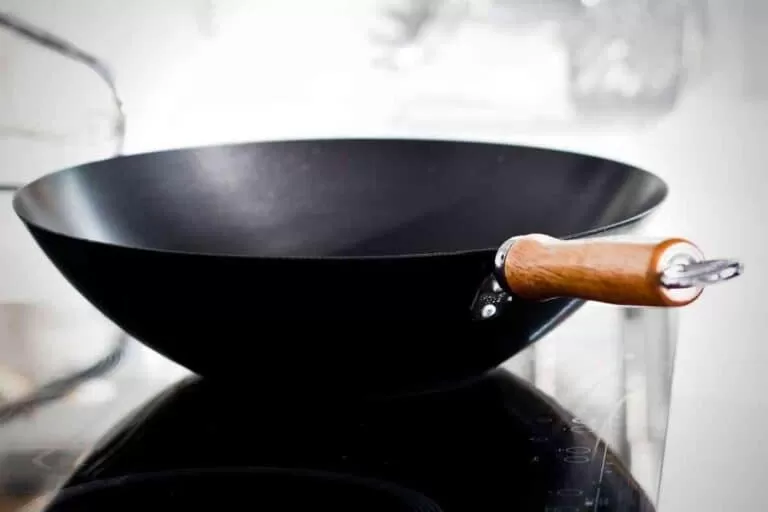Can Induction Cookware Be Used On A Gas Stove? Yes!
Have you ever wondered if your fancy induction cookware can also be used on your good old gas stove? It’s a common question, and the answer lies in the type of cookware you have.
Induction cookware can generally be used on a gas stove. However, compatibility depends on the cookware’s material; ferromagnetic materials like cast iron, carbon steel, or magnetized stainless steel work best for both gas and induction stoves.
When using induction cookware on a gas stove, you should make sure:
- Your cookware contains ferromagnetic materials like cast iron, carbon steel, or magnetized stainless steel for it to work effectively on both gas and induction stoves.
- Quality cookware distributes heat evenly on a gas stove, preventing uneven cooking or hot spots.
- High-quality cookware is more durable and can withstand the high temperatures of a gas stove, offering a longer lifespan and better cooking performance.
7 Considerations When Using Induction Cookware A Gas Stove
| Consideration | Details |
|---|---|
| Cookware Material | Check if the cookware contains ferromagnetic materials like cast iron, carbon steel, or magnetized stainless steel for compatibility with both gas and induction. Avoid materials like copper, which may require specific linings for gas stoves. |
| Heat Distribution | High-quality cookware ensures even heat distribution on a gas stove, preventing hot spots and uneven cooking. |
| Temperature Control | Gas stoves offer precise control, so quality cookware helps maintain consistent temperatures for accurate cooking. |
| Durability | Quality cookware is more durable, resisting warping, denting, and other damage from the high temperatures of gas stoves. |
| Safety | Well-made cookware reduces the risk of burns or flare-ups caused by uneven heating or damaged pots and pans. |
| Cooking Performance | High-quality cookware enhances cooking results in terms of flavor, texture, and presentation. |
| Versatility | Some quality cookware is versatile and compatible with various stove types, including gas, electric, and induction. |
Key Takeaways
- Opt for cookware made of magnetic materials like cast iron or stainless steel to work on both gas and induction stoves.
- Spend a bit more on quality cookware known for even heating and durability—it’s a long-term investment.
- Mind temperature control, especially with non-stick cookware. Preheat ceramic gently, and embrace even heating options for consistent cooking.
- Quality cookware reduces accidents due to uneven heating or damage.

Can Induction Cookware Be Used On A Gas Stove?
Induction cookware can often be used on a gas stove, but it depends on the materials.
Induction cookware requires materials that respond to magnetic fields, like cast iron, carbon steel, or magnetized stainless steel.
These materials work well on both gas and induction stoves. However, cookware made from materials like copper may not be suitable for gas stoves unless they have specific linings.
Always check your cookware’s compatibility with both gas and induction to ensure safe and efficient cooking.
Why Do You Need High-Quality Cookware for Gas?
Let’s delve into why high-quality cookware is essential for gas stoves:
1. High Temperatures
Gas stoves are known for their ability to reach very high temperatures quickly. The open flame can generate intense heat, which is fantastic for searing and achieving a rapid boil.
However, this also means that your cookware needs to withstand these extreme temperatures.
2. Even Heat Distribution
Quality cookware is designed to distribute heat evenly across the cooking surface. In the case of gas stoves, the flames can sometimes create hot spots or uneven heating on cheaper, poorly constructed cookware.
High-quality pots and pans ensure that your food cooks uniformly, preventing burnt or undercooked spots.
3. Durability
The high temperatures and direct exposure to flames can take a toll on cookware over time. Low-quality cookware may warp, dent, or even develop cracks when exposed to these conditions.
High-quality cookware is built to last, often using sturdy materials that can withstand the rigors of cooking on gas stoves.
4. Safety
Cooking on a gas stove demands attention and control. High-quality cookware provides better control over heat distribution and reduces the risk of accidental burns or flare-ups caused by uneven heating or damaged cookware.
5. Enhanced Cooking Performance
Quality cookware can improve your overall cooking experience. It helps you achieve better results in terms of flavor, texture, and presentation.
When your cookware heats evenly and maintains consistent temperatures, it’s easier to execute complex recipes with precision.
6. Versatility
High-quality cookware is often designed to be versatile, suitable for various cooking techniques, and compatible with different types of stoves, including gas, electric, and induction.
This versatility makes your cookware investment more valuable and adaptable to your evolving culinary needs.
7. Longevity
While high-quality cookware may require a larger initial investment, it tends to pay off in the long run.
Quality materials and craftsmanship mean your cookware can last for years, if not decades, reducing the need for frequent replacements and saving you money over time.
Understanding the Differences Between Gas and Induction Stoves
Let’s start by understanding the basics. Gas stoves, those ever-reliable kitchen workhorses, heat your pots and pans through an open flame. On the other hand, induction stoves are a bit more mysterious.
They create a magnetic field that directly heats your cookware. These differing heating mechanisms are at the heart of the compatibility issue.
Compatibility of Cookware with Gas and Induction
Now, let’s dive into the world of cookware compatibility. We’ve all got a variety of pots and pans in our kitchens, but not all of them are created equal in terms of gas and induction friendliness. Here’s the lowdown on different materials:
- Aluminum with Ceramic or Non-Stick Coating: This cookware can work on both gas and induction stoves, but there’s a catch—it needs to be magnetized.
- Carbon Steel and Cast Iron: The good news is that these heavy-duty champs are compatible with both gas and induction.
- Copper: If you’ve got copper cookware, it’s best suited for gas stoves. However, if it’s lined with silver or stainless steel, it can play nice with induction too.
- Stainless Steel with Aluminum or Copper Base/Core: Like aluminum-coated cookware, stainless steel can work on both gas and induction as long as it’s magnetized.
Why Special Cookware is Needed for Induction?
Now, you might be wondering why induction cookware is so finicky about materials. The secret lies in magnetism.
Induction stoves require “ferromagnetic” cookware, which essentially means it must have iron or steel in it. The magnetic magic is what makes the heat transfer happen.
Quality matters, especially when it comes to gas stoves. They’re known for burning at high temperatures, and that’s where high-quality cookware comes into play.
Cheap, flimsy pots and pans won’t cut it—they can lead to uneven cooking.
Tips for Using Induction Cookware on Gas
Here are some handy tips to help you make the most of your induction cookware on a gas stove:
- If you have non-stick cookware, be cautious not to crank up the heat beyond 500°F. High temperatures can damage the non-stick coating.
- When using ceramic cookware, give it a gentle 15-20 second preheat. This helps to avoid sudden temperature shocks.
- Carbon steel and cast iron skillets may take their sweet time to heat up, but once they do, they distribute heat evenly for a perfect sear or sauté.
- Stainless steel cookware might need a helping hand from aluminum or copper to heat up quickly and evenly.
- Be cautious with copper pans, especially those with a tin lining—they’re not the best match for gas stoves.
Compatibility of Frying Pans and Saucepans
Now, let’s talk about frying pans and saucepans. Not all of them are created equal in terms of induction and gas compatibility:
- Pans made from aluminum, brass, and copper typically won’t work on induction hobs unless they are specifically designed for them.
- You can easily identify suitable induction pans by looking for a distinctive coil symbol on the pan’s base or by using a magnet to check for magnetic-grade steel.
- Stainless steel pans may work on induction if they have a magnetic-grade steel base.
Benefits of Using Induction Pans on Gas
Here’s the juicy part—you might be wondering why you’d want to use induction pans on your trusty gas stove. Well, there are some notable benefits:
- Induction pans heat up quickly and evenly on gas hobs, ensuring your food is cooked to perfection.
- Food cooked in induction pans tends to stay hotter for longer periods, which is great for serving meals at the right temperature.
- These pans are known for their durability and resistance to corrosion, meaning they’ll last you a long time.
- Cleaning them is a breeze, and who doesn’t love easy cleanup in the kitchen?
- Some induction pans are versatile and can be used on ceramic, electric, induction, and gas hobs, making them a versatile addition to your kitchen.
- Consider non-stick induction pans for even faster heating and superior cooking results.
Conclusion
In conclusion, the compatibility of induction cookware with gas stoves isn’t a black-and-white issue. It depends on the materials used and the specific design of your cookware.
With the right knowledge and a bit of caution, you can certainly make your induction cookware work its magic on your trusty gas stove.
By understanding the differences between gas and induction stoves, knowing your cookware’s materials, and following some handy tips, you’ll be cooking up a storm with the best of both worlds in no time.





